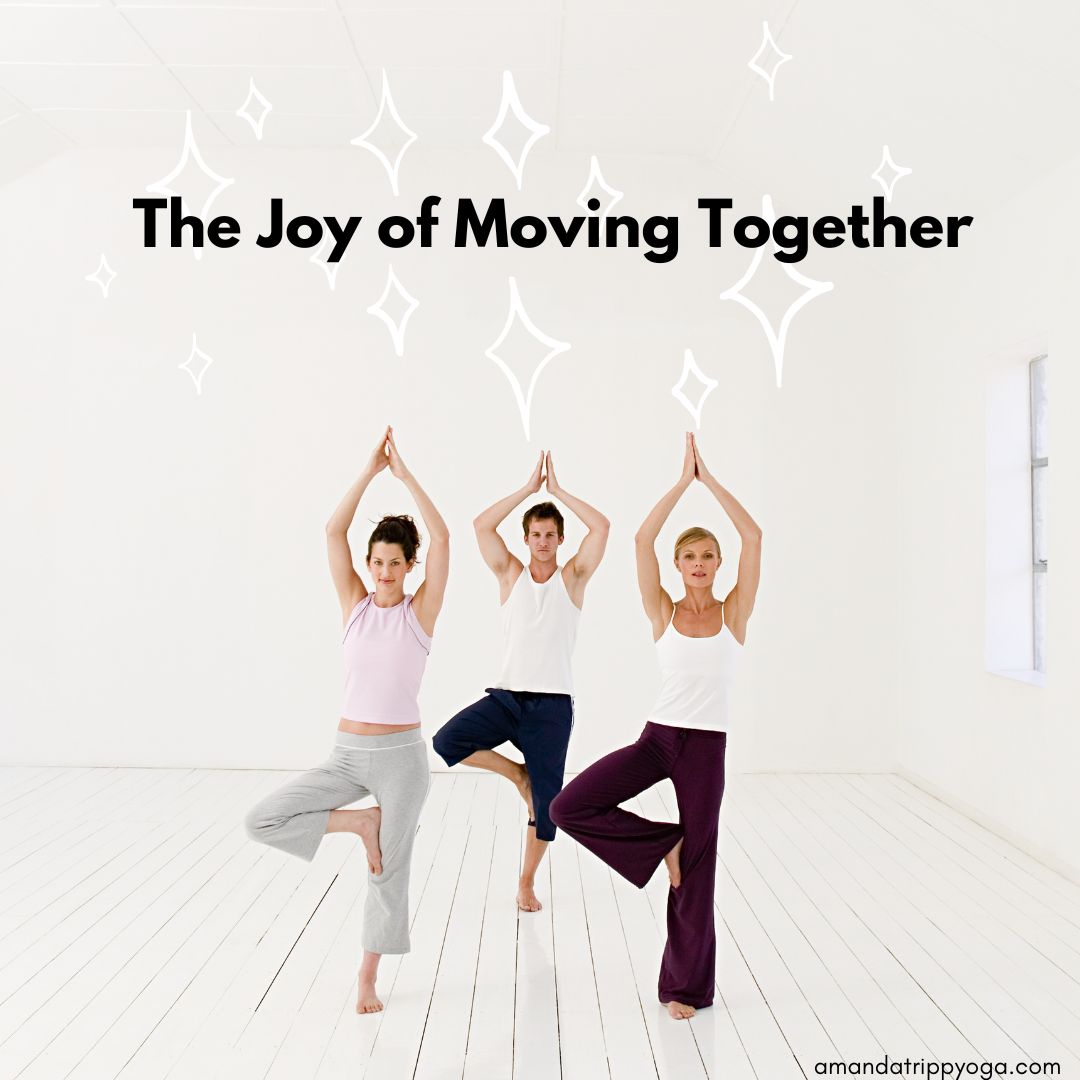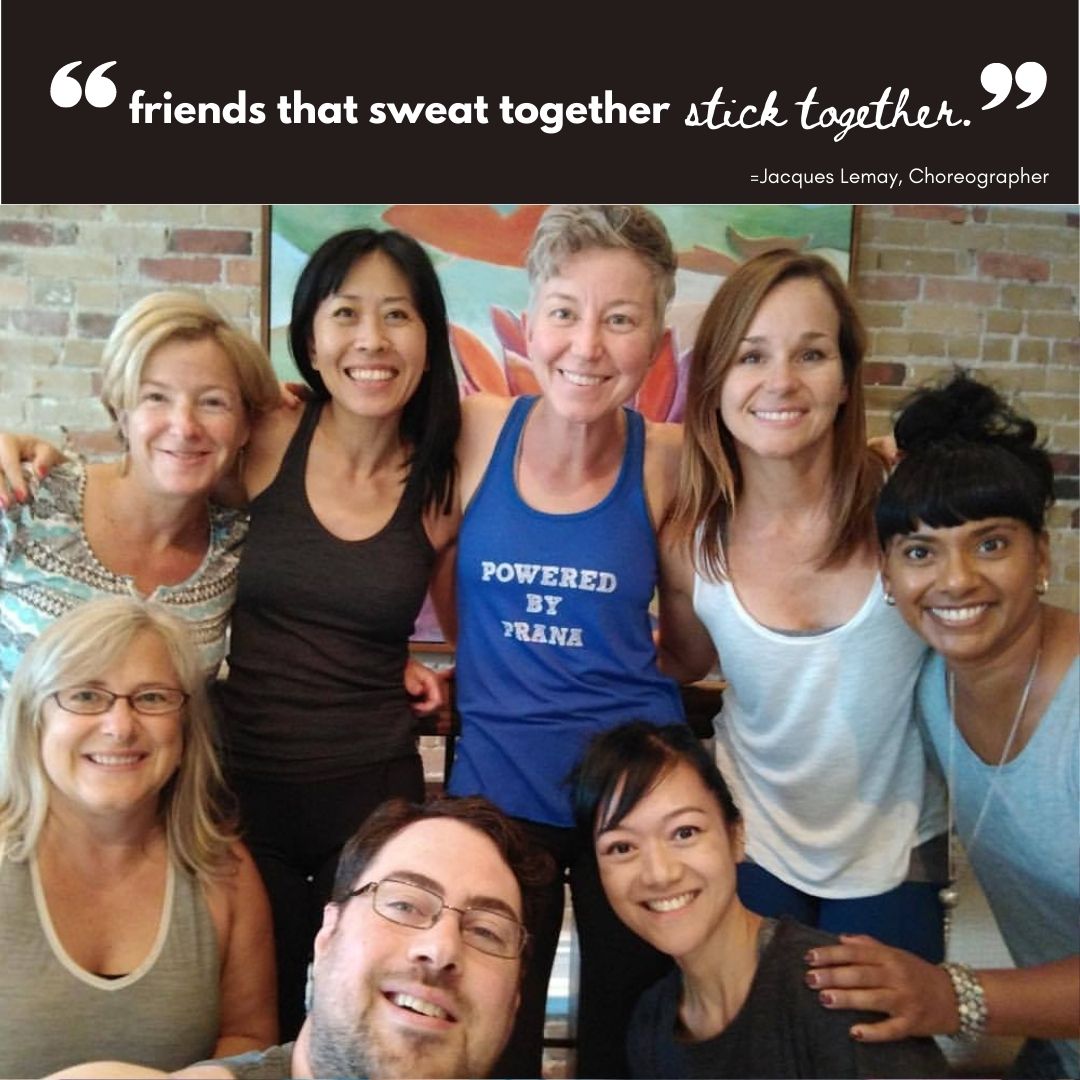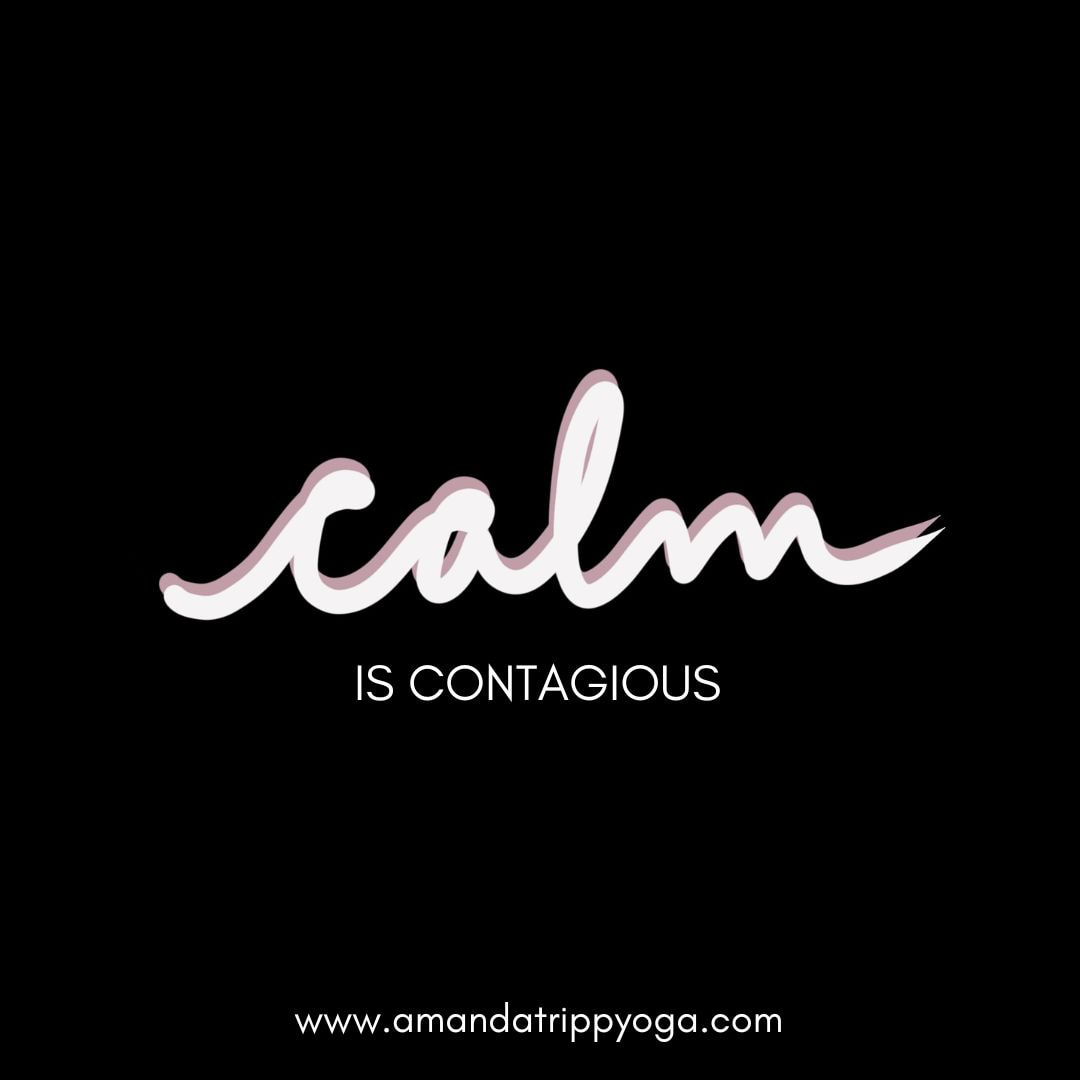|
“I enjoyed practicing with you online, but there’s something special about a live yoga class.” I can’t tell you how often I’ve heard this sentiment since yoga studios re-opened. Which got me wondering … What is that thing that makes practicing together feel so magical? Movement science has the answer. Essentially, we’re wired to love the feeling of moving together. Whether we’re running for the Cure, marching for Human Rights or moving through Sun Salutations together for peace. When we move together, united around a cause, we tap into something called ‘we-agency’, the sense that we can make a difference in the world together - and it feels beautiful, hopeful and powerful. Collective activity is at the core of human happiness. That’s not to say you can’t have a good giggle watching cat fashion shows at home alone on Youtube—but we find our bliss in moments of collective effervescence. COLLECTIVE EFFERVESCENCE This charming term was coined by pioneering sociologist Emile Durkheim way back in 1912. Collective effervescence describes the feeling of upliftment, energy, joy and self-transcendence that bubbles up inside us when we sync our movements with strangers on the dance floor or in a Vinyasa Flow class. Deep down, we all want to feel a sense of connection and belonging. Synchronized movement is an accessible and powerful way to capture that feeling. Yoga philosophy defines suffering as feeling ‘separate’ or ‘disconnected’, In fact, the word ‘yoga’ itself means to ‘yoke together’ or ‘unite.’ The whole aim of yoga is to transcend suffering caused by the idea that we are separate from one another, and to achieve a state of union, a blissful feeling of connectedness with everyone and everything. During the pandemic, opportunities to experience the sense of connection and meaning that comes from moving and playing together was noticeably absent from our lives. And we did, indeed, suffer. Practicing yoga on zoom was okay—but the collective effervescence we get from moving in a group was missing. Dr. Kelly McGonigal explains in her book, “The Joy of Movement”“Our experience of collective effervescence is rooted in our need to cooperate to survive. The neurochemistry that makes moving in unison euphoric also bonds strangers and builds trust…Collective actions remind us what we are part of, and moving in community reminds us where we belong.” (68) As a dancer/friend of mine always used to say ‘Friends that sweat together stick together.’ Research also shows that regularly experiencing movement together enhances wellbeing above and beyond other types of social connection. Here I am pictured with friends made at a movement training in Toronto. Over the last 15 years, I've made a lot of wonderful friends through yoga and movement. SYNCHRONIZATION Synchronization is another key to experiencing collective joy. When you experience the calm synchronized movement of a flowing yoga sequence where everyone in the room moves and breathes together, a social bond and a kind of group identity are formed. There is both a physical sense of connection, and a sense that the boundary of who you are dissolves. “The feeling of boundaries dissolving is one of the most powerful aspects of collective joy.” says Dr. McGonigal. Human beings also synchronize with each other on a physiological level. Research suggests that when we feel connected to one another through group activities like singing, clapping and dancing our heartbeats, breathing and brain activity all sync up too - like we're one giant organism. That’s how eager our bodies and brains are to transcend the small self and feel part of something bigger. It’s like when you watch a hypnotic starling murmuration or a school of fish move together, changing direction as though they share a single intuitive mind. THE ROLE OF THE TEACHER Part of a yoga teacher’s job is to prepare for a group class by making sure they arrive feeling calm, grounded and emotionally regulated. Why? Because emotions are contagious. Emotional co-regulation is part of a process called neuroception. Neuroception is the subconscious process of scanning our environment for signs of safety and risk. We notice (consciously or unconsciously) whether facial expressions, tones of voice and body language indicate that someone is safe to be around. When we pick up on cues of safety from our environment, we can relax—mentally and physically. When you experience a beautiful, blissful yoga practice, part of that magical feeling is due to the teacher’s presence. If the teacher has a warm, calming presence they create an environment that allows students to feel safe enough to let go. If your yoga teacher arrives upset, angry and emotionally dysregulated, the chances are you’re not going to get blissed out that day. If they had a fight with a spouse before class, you might pick up on subtle (or not so subtle) cues that they’re upset. You might hear tension in their voice or sense something off in their demeanor. More obviously, they might react to a ringing cell phone with rage or snap at a student for talking during class. Students need to feel they are in a calm, safe space in order to un-clench and enjoy their yoga experience. The responsibility for creating that peaceful environment falls on the teacher. The good news is that it’s not just negative emotions that are contagious. Calm is contagious too. Hopefully, every yoga teacher understands that their emotional state is linked to everyone else’s in the room. And hopefully they prepare for class by making sure they arrive calm, grounded and stable. So they can ‘hold space’ - using their nervous system to help regulate the nervous systems of others. MAKING MOVEMENT MEANINGFUL
In my experience, students don’t remember your pose sequences. What they do remember are class themes that felt meaningful to them. “I loved that class you taught about feeling grounded. It helped me get through a wild week.” or “Can you teach another class about taking a pause? That was so powerful. It’s a yoga teacher’s job to create a practice that has a goal, intention or purpose. When we move together for a specific purpose—for example, to tap into heart qualities like compassion, contentment or courage, something special happens. A " group moving in unison is seen by others as united in purpose, connected by shared values, and acting as one…Those in the group feel more powerful, too. When people move together, they view external threats as less fearsome and their opponents as less intimidating… it’s part of why social and political movements organize marches. The collective movement not only demonstrates the strength of its coalition to outsiders but also bolsters the morale of its members. Studies of real-world marches and demonstrations confirm that participating in these events generates feelings of we-agency…” Kelly McGonigal, 87 When we move together as one in the name of peace or freedom or whatever – whether it’s in a march or in a yoga flow, we tap into our collective strength. We feel a sense of shared identity and purpose. We transcend our individual selves and become part of something bigger, more beautiful and more powerful than any one of us on our own. It erases our feelings of separateness. We achieve a state of yoga, a remembering that we are intimately connected to one another. That is the magical thing about moving together.
1 Comment
8/5/2022 10:02:06 am
Thank you for this blog post! It was exactly what I needed to read today.
Reply
Leave a Reply. |
Authormindbalm, is a sanctuary for ideas that both soothe and stimulate. I delve into the rich traditions of yoga philosophy and the latest insights from movement science to bring you content that nurtures your soul and challenges your mind. Whether you're seeking inner peace or looking to expand your understanding of the body-mind connection, mindbalm offers thoughtful articles, practical tips, and inspiring reflections to help you on your journey. Join us as we explore the interplay of stillness and motion, the harmony of body and mind, and the path to true well-being. Archives
July 2024
Categories |



 RSS Feed
RSS Feed
